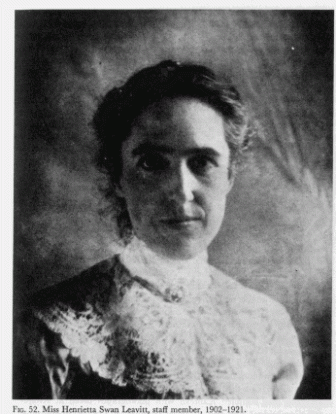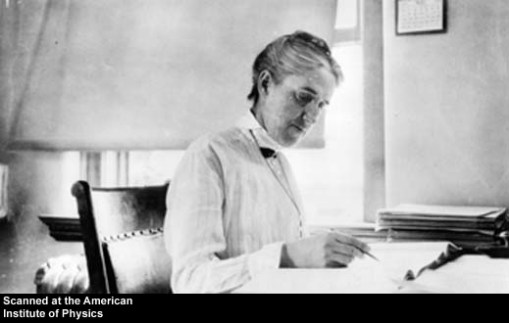Henrietta Swan Leavitt (July 4, 1868 – December 12, 1921), a science prodigy forgotten by the world was an American astronomer. Her work as one of the woman human “computer” started at the Harvard College Observatory back in 1893 where she first examined photographic plates in order to catalog and measure the brightness of stars. However, women were not allowed to operate telescopes in the early 1900s. Even though we don’t know much about her, it was her discovery that allows astronomers to measure the distance between the Earth and galaxies that are far away from the Earth. After this prodigy’s death, people used her work for big things like measure the size of the Milky Way and ascertain the age of the Universe.
Birth & Childhood
The science prodigy was born on July 4, 1868 in Lancaster, Massachusetts. Her father, George Roswell Leavitt, a Congregational church minister and her mother was Henrietta Swan Kendrick. Her family moved to Cleveland, Ohio later when she was a young child and that’s where she grew up.
Educational Life
The lady of luminosity started to take interest in astronomy during her senior year in college when she attended an astronomy class. She continued to study astronomy for her graduation work. Leavitt graduated from the Collegiate Instruction for Women which is currently known as Radcliffe College.
Career
After graduation, she traveled to a lot of places in Europe and America during which she lost her hearing. Three years after her graduation, she started working as an assistant at Harvard College Observatory. Even though she had the ability to handle big projects, she was handed little theoretical work. Women were not allowed to use telescopes back in the early 1900s and Pickering did not like his female staff to work on such things. So, she used to work as the chief of the photographic photometric department and was in charge of taking care of the telescopes.
As she had independent means, she didn’t receive any payment for her work for a while. Later, she used to get $0.30 per hour for her job. She was assigned to study “variable stars” by Pickering and the luminosity of this varies over time.
Research
Leavitt’s work used to involve performing research from the observatory’s photographic plates collection. She used to determine a star’s magnitude by using the plates. When she was assigned to study “variable stars”, Pickering was not expecting a significant discovery from Leavitt that will slowly change the world of astronomy.
She discovered more than 1700 stars when she started to investigate Magellanic Clouds. Moreover, she compared different images of the same variable star and found out that stars of the “Cepheid” type had bright-dim cycle periods inversely proportionate to their magnitude. In short, the stronger and brighter the star, the slower its cycle. The star cycles does not depend on how dazzling they appear but on how bright they actually are.
Later on she determined the absolute magnitudes of stars which was later used for discovering the distances of star which are even ten million light years away. A way to measure the size of the Milky Way using her discovery was done by Harlow Shapley. It’s her work that helped Edwin Hubble ascertain the age of the Universe.
“A straight line can readily be drawn among each of the two series of points corresponding to maxima and minima, thus showing that there is a simple relation between the brightness of the variables and their periods.” that’s how Leavitt described her discovery. However, Pickering did not let her follow-up on her discovery and treated her like a small lab assistant.
Leavitt used to work sporadically because of her health problems and obligations from family. She was still chosen as the head of stellar photometric in 1921 when Harlow Shapley, the new director came in. However, she had succumbed to cancer at the end of the year.
Awards & Honors
A crater sent on the Moon was named after her, “Leavitt”, an asteroid 5383 Leavitt was also named in her honor. She was supposed to win Nobel Prize in Physics for her work. However, when Gosta Mittag-Leffler was considering her as a nominee for 1926 Nobel Prize in Physics, she learned that Leavitt had died. She was never nominated as the Nobel Prize is not given posthumously.
Death
The lady of luminosity died from cancer on December 21, 1921. Sge was buried in her fmily plot at Cambridge Cemetry. She was a member of the American Association of University Women, “Phi Beta Kappa” and many different organizations and an idol for woman in astronomy. Her contribution to the advancement of astronomy is considered as monumental and she helped us to understand our place in the Universe better. There is no way of knowing now how much more she would have contributed if she had not died early.
References:
- Johnson, George (2005). Miss Leavitt’s Stars: The Untold Story of the Woman Who Discovered How to Measure the Universe. New York: W.W. Norton & Company. ISBN 0-393-05128-5.
- Korneck, Helena: “Frauen in der Astronomie”, Sterne und Weltraum, Oct. 1982 412–414
- Lorenzen, Michael (1997). “Henrietta Swan Leavitt”, in Notable Women in the Physical Sciences: A Biographical Dictionary. Edited by Barbara and Benjamin Shearer. Westport, CT: Greenwood Press, 233–237. ISBN 0-313-29303-1.



